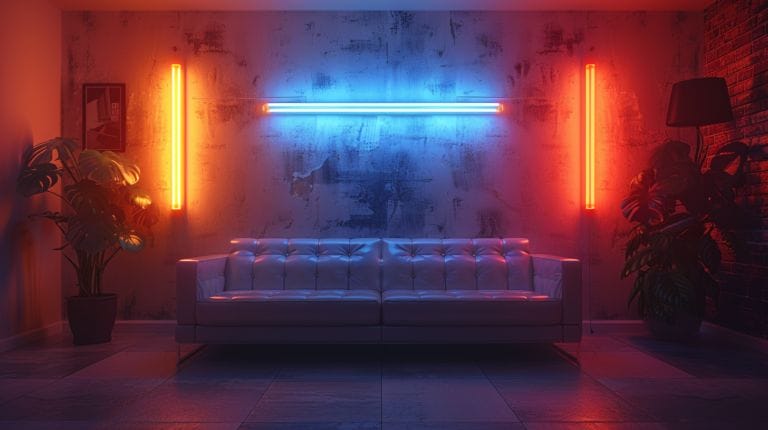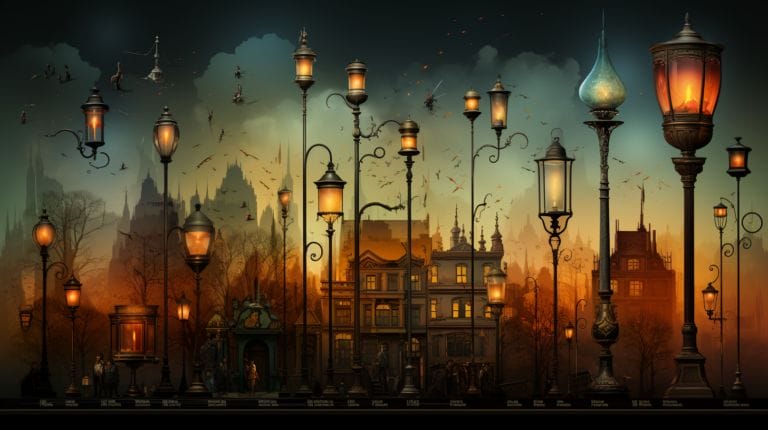What Color Is 2700k? Exploring Warm Lighting Tones
As we step into a room bathed in the gentle glow of 2700k lighting, we can’t help but notice the warm and inviting ambiance it creates. The color of 2700k is a pivotal element in setting the tone for a cozy space, but what exactly does it look like? Let’s explore the nuances of this warm lighting tone and unravel the mysteries behind its soft, yellowish hue.
Key Takeaways
- 2700k color temperature emits a soft, yellowish light ideal for cozy environments.
- LED lights at 2700k create a warm ambiance in residential spaces like living rooms and bedrooms.
- Kelvin scale categorizes 2700k as a warm, inviting tone for traditional lighting experiences.
- 2700k light bulbs offer a yellow-toned glow, enhancing the atmosphere in various settings.
- Understanding color temperature helps in selecting the right 2700k LED lamp for desired ambiance.
Understanding the Basics of Color Temperature and LED Light

When we talk about the 2700k color temperature, we’re venturing into the realm of warm lighting tones. This specific temperature on the Kelvin scale signifies a warm, inviting glow often associated with cozy environments and relaxation. LED lights set at 2700k emit a soft, yellowish light that’s perfect for creating a comfortable ambiance in living spaces or bedrooms.
Understanding color temperature is vital in controlling the appearance of LED lights. The Kelvin scale helps us measure and categorize different color temperatures, with lower values like 2700k representing warmer tones, and higher values moving towards cooler, bluish hues. By grasping this concept, we can manipulate a room’s atmosphere simply by adjusting the color temperature of the LED lights, opening up a world of possibilities for creating unique and inviting spaces.
The Appearance and Application of 2700k LED Light Bulbs

2700k LED light bulbs emit a warm and inviting glow, with a soft, yellowish hue reminiscent of traditional incandescent lighting. The warm white color of a 2700k bulb creates a cozy atmosphere, making it ideal for residential spaces like living rooms, bedrooms, and kitchens.
However, its yellow tone may be too intense for certain areas or preferences. These bulbs can enhance ambiance in residential settings, providing a comfortable and relaxing environment. The soft yellow light can be particularly soothing in bedrooms, creating a calming atmosphere conducive to relaxation and sleep. In kitchens, the warm tone can add a welcoming touch, making the space feel more inviting and cozy.
The Difference Between 2700k and 3000k Light Bulbs

Comparing 2700k and 3000k light bulbs reveals subtle yet significant differences in their color temperature and overall ambiance. The 2700k bulbs emit a warmer, more yellow-toned light compared to the slightly cooler and more neutral tone of the 3000k bulbs. These variations in color temperature can have a noticeable impact on the mood and atmosphere of a space.
Choosing between 2700k and 3000k light bulbs depends on the desired effect for different fixtures. For areas where a cozy and intimate ambiance is preferred, such as bedrooms or living rooms, 2700k bulbs may be more suitable. Conversely, 3000k bulbs are often favored for task lighting in areas like kitchens or workspaces where a brighter, more energizing light is needed.
Blue Light Hazard: Is 2700k LED Light Safe?

Blue light, naturally present in sunlight, has raised concerns due to its potential hazards when emitted from artificial sources like LED bulbs. When evaluating the safety of 2700k LED bulbs, it’s essential to understand how much blue light they emit and how this can impact our well-being.
To minimize the potential blue light hazard from 2700k LED lighting, one can consider using fixtures with built-in filters or diffusers that help reduce the amount of blue light reaching our eyes. Adjusting the positioning of light sources or using dimmers can further aid in controlling blue light exposure.
Selecting the Right 2700k LED Lamp for Your Needs

When choosing from a variety of 2700k LED lamps, it’s important to consider factors such as color temperature rating, brightness, and the color of light emitted. Ensure the 2700k LED lamp matches your requirements by comparing it to the warm, inviting glow of a 2700k incandescent bulb. Understanding the potential health effects of different color temperatures can also guide your decision-making process.
Conclusion
Overall, 2700k LED light bulbs provide a cozy and inviting atmosphere with their warm, yellowish glow. Perfect for creating a comfortable ambiance in residential spaces like living rooms and bedrooms, these lights offer a soft and gentle lighting tone that can enhance the overall feel of a room.
With their comforting warmth and energy-efficient benefits, 2700k LED lights are a popular choice for creating a welcoming environment in any home.
Frequently Asked Questions
What is the color of a 2700k light bulb?
A 2700k light bulb emits a warm, yellowish light similar to traditional incandescent bulbs.
How to choose between different light color temperatures?
When choosing lighting, consider the atmosphere you want to create. Lower color temperatures like 2700k provide a warm, cozy feel, while higher temperatures like 6500k offer a crisper, cooler light.
How does the color of an LED bulb affect the overall lighting in a fixture?
The bulb color, indicated by the temperature in kelvin (k), can greatly influence the mood and ambiance of a room. For example, a 2700k bulb will create a more relaxed and inviting environment compared to a 6500k bulb that offers a brighter and more energetic feel.
Can two different color temperatures blend well in a lighting setup?
Yes, two color temperatures can blend fairly well in a space, offering a unique lighting effect. For instance, mixing 2700k and 3000k bulbs can create a warm yet slightly brighter ambiance.
How does the duration of exposure to a specific color temperature affect our visual perception?
Prolonged exposure to a particular color temperature, such as 2700k, can impact how objects appear visually. It is important to consider the effects of lighting when setting up a space for different activities.







